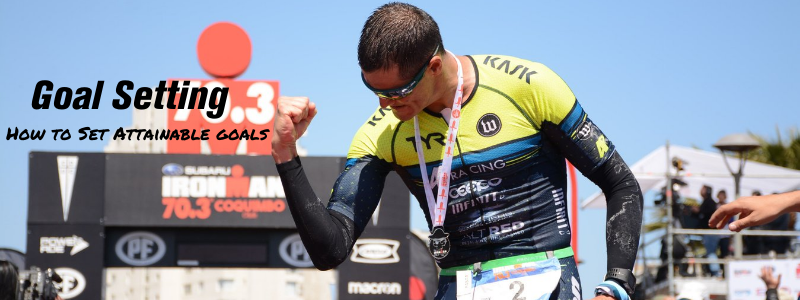Goal Setting
- Dec 28, 2021

The key to keeping yourself accountable is knowing what you’re trying to achieve and setting goals to help you get there.
Goal setting has long been known to be an important part of achieving success or accomplishing your goal. When you “wing-it”, more often than not, you will lose focus at some point along the journey and fall short of achieving whatever it is that you set out to accomplish. By creating specific goals, you can revisit your goal(s) when the going gets tough or you fall off track to help you refocus and get back on track.
When it comes to setting goals, you want them to be SMART — Specific, Measurable, Attainable, Relevant, and Time-Bound — When you create a goal that has all five of these components, you’re much more likely to stick to it and be successful.
Specific
Being specific in your goal setting means that there are specific details included that clearly define what you are working towards.

For example, if your goal is “I want to be healthier” — This tells us what your overall desired outcome is, but it is not specific to how you want to become healthier.“Healthy” can mean a lot of different things and is too broad and unfocused to be helpful in successfully achieving your goal.
Instead, drill-down and define what “healthier” is to you. Is it losing weight? Eating more fruits and vegetables? Lowering blood pressure? Reducing the need for medication? This helps narrow down the goal so it is more manageable and actionable.
Let’s say we choose, “I want to lose weight to be healthier”.
The overall desired outcome of “I want to be healthier” is still very much present, but the more specific & actionable goal of losing weight will help you improve your health.
The more specific the goal, the better. “I want to lose weight” is more specific than “I want to be healthier,” but “I want to lose 20 pounds” is even better. This brings us to the next component of goal-setting...
Measurable
A measurable goal is quantifiable. In setting a weight loss goal, it’s important to know how much weight loss you want to achieve so you can stay on track.

Instead of saying “I want to lose weight” we can add a measurable tool to our goal by saying “I want to lose 10 pounds”. This gives you a numerical value of weight that we can track.
By creating measurable goals, we can more easily track and assess progress. This allows us to check in with ourselves as we are working towards achieving our goals, and helps us identify and take corrective action if we happen to fall off the rails.
Attainable
An attainable goal is one that you can actually accomplish. It is realistic and individualized for what your unique body can attain.
Setting an attainable goal starts with recognizing that we all have different abilities, genetics & external constraints. When we are cognizant of those factors and take them into consideration before setting our goals, we are more likely to be successful. It really comes down to knowing yourself, your body, and what is realistic to you.

Although our goals should be attainable, they should also push us a little outside of our comfort zone to become a better version of ourselves. We’ll talk more about short and long-term goals below, but having several short attainable goals can help you get to your long-term goal that may not feel attainable this second.
“You have to set goals that are almost out of reach. If you set a goal that is attainable without much work or thought, you are stuck with something below your true talent and potential.” —Steve Garvey
If we go back to our goal of “I want to lose 10 pounds”, we can make that attainable by reflecting on certain factors that pertain to our specific bodies. For example, we could ask ourselves, do we have 10 pounds to lose? Do we have more? Do we have less? Overextending your goals can hurt your success and motivation levels so it is important to be honest with yourself on what is attainable.
Relevant
Goals should be relevant to your long-term plans. It’s good to have both short-term and long-term goals. For example, someone just starting out in triathlon probably isn’t going to have a goal of qualifying for the Ironman World Championships but that may be a long-term goal for them that helps keep them motivated. Shorter-term goals might be to complete a sprint, Olympic, and Half Ironman triathlon first.

There are also different types of goals to keep in mind. Ironman.com recommends setting primary, secondary, and last-level goals. Primary goals are things such as, “I want to win the race,” which has a lot to do with who else shows up to the race which you can’t control; making it harder to achieve, but the most rewarding. To retain motivation in the face of more daunting challenges, it is good to have a secondary goal related to what you can control. It might be sticking to your race plan on the bike so you don’t bonk on the run (like you have in the past) or simply finishing the race. With last-level goals being the minimum you expect to achieve.
Time-Bound
Having goals that have some sort of timeline is key to making sure you progress at the right rate and achieve them in a timely fashion.
We all know someone who has the same New Year’s resolution year after year but never seems to get there by the time December comes back around. The intention is there, but there is no pressure to work towards it because, since there’s really no timeframe, they have no sense of urgency.

In our example, we mentioned losing 10 pounds in 10 weeks, which is both realistic but also time-bound. By having an end goal of 10 weeks, I know I must lose 1 pound per week in order to stay on track and reach my goal.
Action Items
Not only do you want to have your one to three SMART goals, but you also want to make sure you have a few action items that are going to help you reach your goals. If your goal is weight loss, your actions items might include:
- Consulting with a registered dietitian
- Tracking your daily food intake with an app such as My Fitness Pal
- Exercising for at least 45 minutes per day on at least 6 days per week
So whatever your goals are, take a few minutes to make sure they are SMART - Specific, Measurable, Attainable, Relevant, and Time-Bound. By doing this, you’ll greatly increase your ability to stick to and ultimately achieve your goals.











